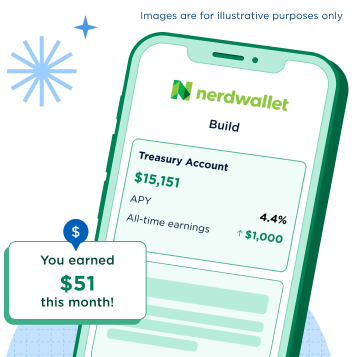How to Calculate Treasury Bill Yields
You buy Treasury bills at a discounted price — say $96 for a four-week bill — and receive the face value of $100 at the end of the four weeks.

Many, or all, of the products featured on this page are from our advertising partners who compensate us when you take certain actions on our website or click to take an action on their website. However, this does not influence our evaluations. Our opinions are our own. Here is a list of our partners and here's how we make money.
The investing information provided on this page is for educational purposes only. NerdWallet, Inc. does not offer advisory or brokerage services, nor does it recommend or advise investors to buy or sell particular stocks, securities or other investments.
Interested in buying Treasury bills but don’t know how you’ll make money? We’ll explain.
T-bills don’t pay interest in the same way as other Treasurys. Instead, you buy the bills at a discounted price and hold them until the end of the term. Once the term ends, or reaches maturity, you receive the face value.
Let's look at a Treasury bill auction to see how a Treasury bill purchase works.
On May 15, 2024, the Treasury held an auction for a 17-week Treasury bill with an issue date of May 21 and a maturity date of Sept. 17. The price per $100 amounted to about $98.27, or an annualized discount rate (shown as a "high rate" in TreasuryDirect) of 5.225%.
AD
Earn 3.98% APY by investing in U.S. Treasury Bills*
Maximize your cash by investing in low-risk, government-backed T-Bills. All the work is done for you — just make the deposit and watch your money grow.
*Rate when held to maturity. Rate shown is subject to price fluctuations.

If you bought $1,000 worth of T-bills in this auction, that means you would have paid $982.73 on May 15. On Sept. 17, you'd receive $1,000, earning $17.27 on your investment.
If you were to reinvest in this T-bill for one year, you could arrive at an annual investment rate for your 17-week T-bill based on the actual purchase price of $982.73.
To explore how this works, use our T-bill calculator below.
» Learn more in our full guide on Treasury bills.
Article sources
NerdWallet writers are subject matter authorities who use primary,
trustworthy sources to inform their work, including peer-reviewed
studies, government websites, academic research and interviews with
industry experts. All content is fact-checked for accuracy, timeliness
and relevance. You can learn more about NerdWallet's high
standards for journalism by reading our
editorial guidelines.
Related articles







